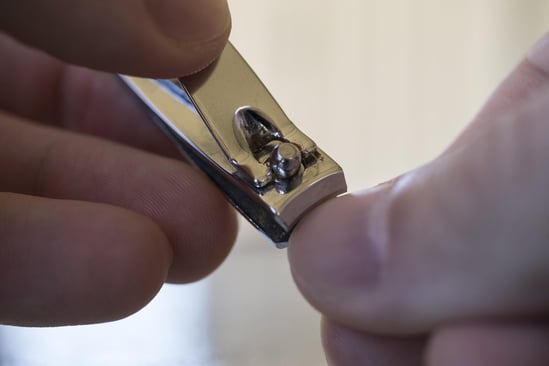CANSFORD LABS
UK Fingernail testing: How it works and when should you use it?
on Aug 12, 2022
People will do all sorts to avoid a hair drug test.
Shaving their heads, bleaching their hair.
It's actually one of our most searched-for pieces of information on our website. But while these tactics may well mean that head hair can’t be tested from donors - namely your clients - they won’t escape that easily. In these cases, we’ll offer the donor two options: body hair drug tests, or fingernail drug testing.
So, how does a nail drug test work, and when should you use it?

Picture credit: Image by Shaun from Pixabay
How fingernail and toenail testing works
At Cansford Labs, we use nail clippers to take a nail sample, clipping down as far as the top of the fingertip. We can only take nail samples that have a normal appearance that are not painted with nail varnish: we advise clients to ensure their donors are aware of this before the collection takes place. We are also unable to take samples from those with diabetes or peripheral artery disease, as these can affect the results.
- You may also like: Will hot tub use affect my clients drug test?
While hair can be sectioned to time stamp an individual’s drug use, this is not possible when you have a nail test: the results of the liquid chromatography with mass spectrometry analysis will simply reveal whether or not the donor has used the substance we are testing for.
However, there is a difference between fingernails and toenails in terms of their growth rate. As toenails grow more slowly, a toenail sample collected from a donor will tell us whether the substance has been used in the last 12 months. However, the faster growth rate of fingernails means we can narrow this window down to the last six months.
When should you use fingernail or toenail testing?
Nail testing is often a last resort. But that doesn’t mean it’s not accurate, or that it won’t stand up in court. While head hair testing is our preference, if a donor is bald or has chemically treated hair - or if hair testing is ruled out for religious reasons - we turn to body hair.
Professionalism, empathy and methods
Similarly, if a donor has alopecia and, as a result, severe anxiety about their cosmetic appearance, we will avoid head hair testing. It may be that donors with alopecia have been tested previously by labs that take a large chunk of hair - and while the amount of hair sampled by Cansford Labs is small, we understand that these donors will be anxious not to lose further hair.
Unable to test body hair
It may be, however, that we are unable to test body hair: in some cases, a donor will not have enough, or they may have shaved it for competitive sports, such as cycling. In some instances, the donor may be aware that body hair is a fall back option when head hair can’t be tested, and remove any hair to avoid being tested.
That’s where nail testing comes in. While this is the “last resort” in a list of testing options, it will still allow us to provide a reliable yes/no view of whether the donor has used drugs in the last six months (or 12 months in the case of toenails).
Should hair and fingernail testing be used together?
While some clients believe that a drug test with hair and nail testing should be used side by side for truly definitive results, it’s only rarely that we would recommend using both methods on the same case. In general, fingernail (or toenail) testing should only be used when there is no head or body hair to test, or when a donor has very short head or body hair.
Timeframes in months
In the latter case, their hair sample may only cover a timeframe of a month or two: any drug use from further back will not be detected. With a nail drug test covering the last six months, however, we may still see a positive result even if a negative is detected from the short hair sample.
Highly Accurate
While a hair drug test and fingernail testing can accurately and reliably detect whether a donor has used illegal substances, the two testing methods differ significantly in their applications and in the level of detail the results provide. For an overview of drug usage in the last six months, a nail drug test is highly accurate - but we would only recommend it to clients in the absence of head or body hair, or if the body hair is too short to cover the required timeframe.

John Wicks
John Wicks is one of the UK's leading experts in drug testing and has been for over 25 years. He is CEO and co-founder of Cansford Laboratories, a drug and alcohol testing laboratory based in South Wales. John is one of the ‘original expert minds’ who alongside co-founder Dr Lolita Tsanaclis, is responsible for bringing hair testing to the UK.
